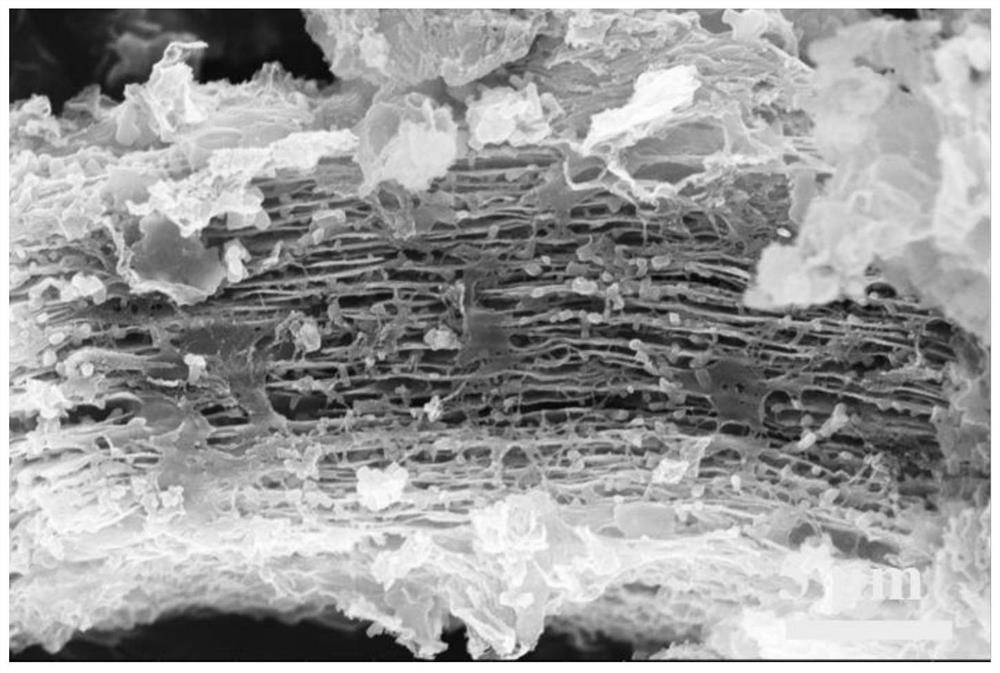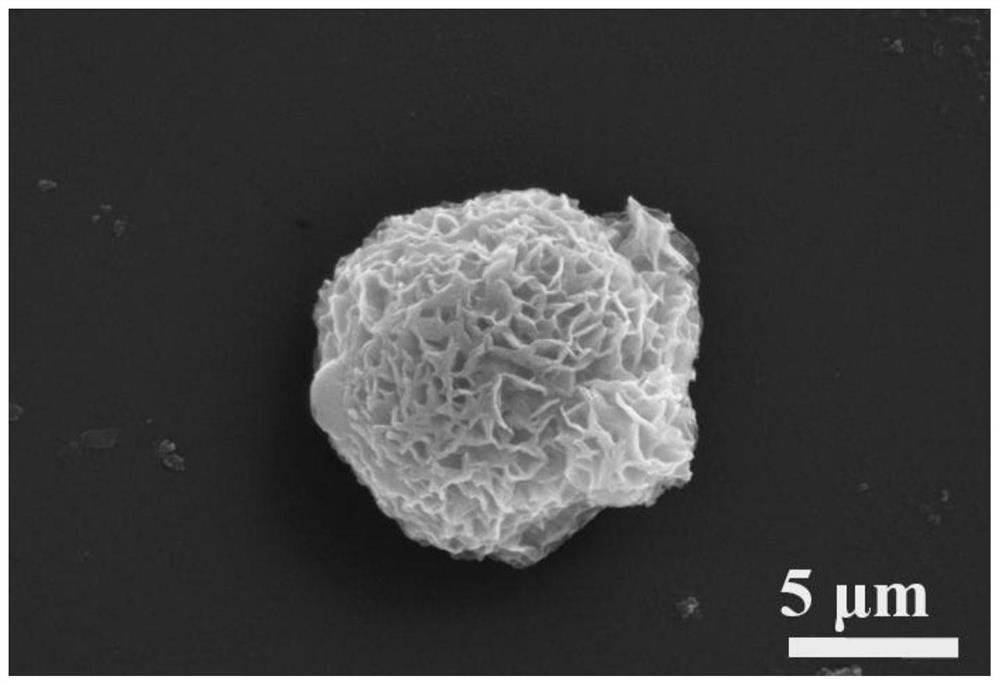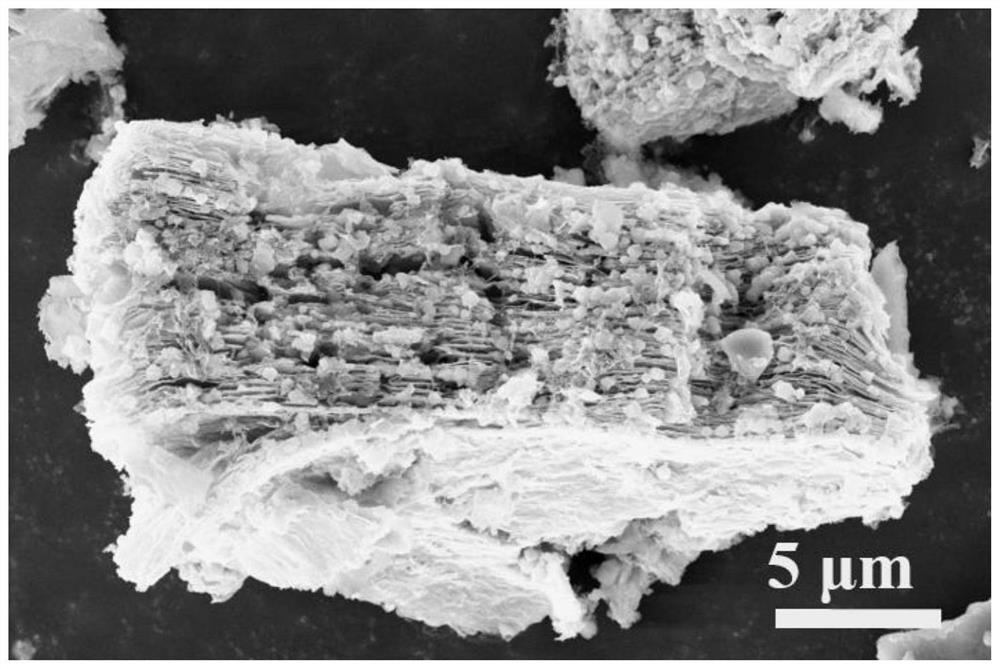Nano composite material integrating heat conduction and wave absorption and preparation method thereof
A technology of nano-composite materials and wave-absorbing fillers is applied in the field of nano-composite materials and their preparation, and achieves the effects of great scientific significance, great practical application value, and simple process operation.
- Summary
- Abstract
- Description
- Claims
- Application Information
AI Technical Summary
Problems solved by technology
Method used
Image
Examples
Embodiment 1
[0020] A method for preparing a nanocomposite material integrating heat conduction and wave absorption, specifically comprising the following steps:
[0021] Step 1: Weigh 1.0 g of titanium carbide obtained by hydrofluoric acid etching, add 150 mL of deionized water, and ultrasonically disperse for 1 to 2 hours at 60 ° C, and the mixed solution is set aside;
[0022] Step 2: Take 1.0 g of boric acid and 6.0 g of urea and add them all to the above mixed solution, and stir and dry the mixed solution at 80° C. until the mixed solution is completely dried to obtain dry solid powder;
[0023] Step 3: Transfer the dry solid powder obtained above to a porcelain boat and place it in a closed tube furnace, vacuumize and replace with argon three times, then start the reaction at a heating rate of 5°C / min, and control the pressure of the closed tube furnace system 0.2MPa, until the system temperature reaches 900°C, keep it for 3 hours, then continue to increase the temperature at 1°C / min...
Embodiment 2
[0025] A method for preparing a nanocomposite material integrating heat conduction and wave absorption, specifically comprising the following steps:
[0026] Step 1: Weigh 0.8g of molybdenum disulfide nanosheets prepared by the conventional hydrothermal method, add 150mL of deionized water, and disperse ultrasonically for 1 to 2 hours at 60°C, and prepare the mixed solution for later use;
[0027] Step 2: Take 1.0 g of boric acid and 5.0 g of urea and add them all to the above mixed solution, and stir and dry the mixed solution at 80° C. until the mixed solution is completely dried to obtain dry solid powder;
[0028] Step 3: Transfer the dry solid powder obtained above to a porcelain boat and place it in a closed tube furnace, vacuumize and replace with argon three times, then start the reaction at a heating rate of 10°C / min, and control the pressure of the closed tube furnace system 0.2MPa, until the system temperature reaches 900°C, keep it for 3 hours, then continue to inc...
Embodiment 3
[0030] A method for preparing a nanocomposite material integrating heat conduction and wave absorption, specifically comprising the following steps:
[0031] Step 1: Weigh 1.0 g of titanium carbide obtained by hydrofluoric acid etching and add it to 200 mL of deionized water. At 60 ° C, ultrasonically disperse for 1 to 2 hours, and the mixed solution is set aside;
[0032] Step 2: Take 1.5g of boric acid and 10.0g of urea and add them all to the above mixed solution, and stir and dry the mixed solution at 80°C until the mixed solution is completely dried to obtain dry solid powder;
[0033] Step 3: Transfer the dry solid powder obtained above to a porcelain boat and place it in a closed tube furnace, vacuumize and replace with argon three times, then start the reaction at a heating rate of 10°C / min, and control the pressure of the closed tube furnace system 0.5MPa until the system temperature reaches 900°C, keep it for 3 hours, then continue to increase the temperature at 5°C / ...
PUM
 Login to View More
Login to View More Abstract
Description
Claims
Application Information
 Login to View More
Login to View More - R&D
- Intellectual Property
- Life Sciences
- Materials
- Tech Scout
- Unparalleled Data Quality
- Higher Quality Content
- 60% Fewer Hallucinations
Browse by: Latest US Patents, China's latest patents, Technical Efficacy Thesaurus, Application Domain, Technology Topic, Popular Technical Reports.
© 2025 PatSnap. All rights reserved.Legal|Privacy policy|Modern Slavery Act Transparency Statement|Sitemap|About US| Contact US: help@patsnap.com



